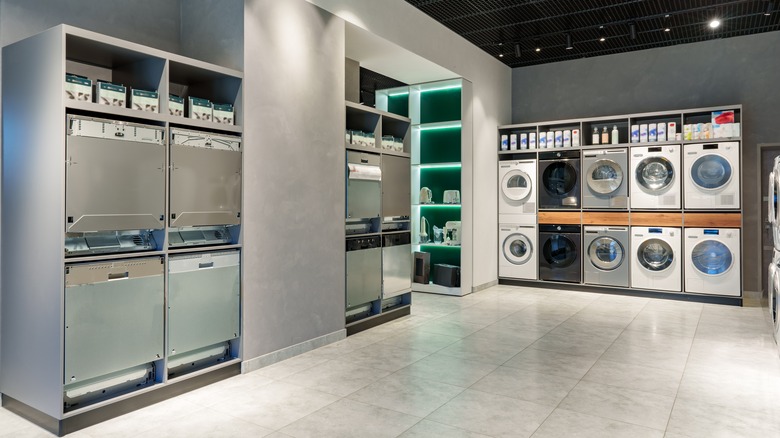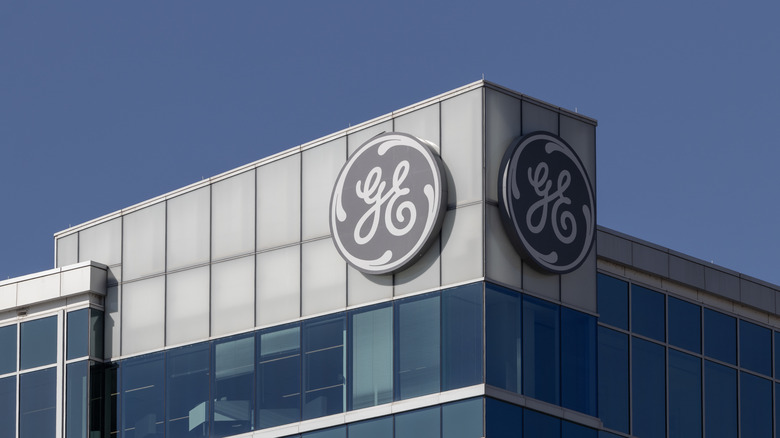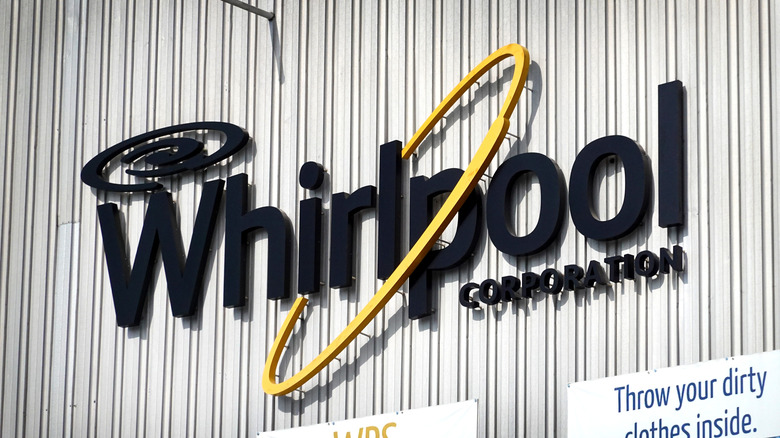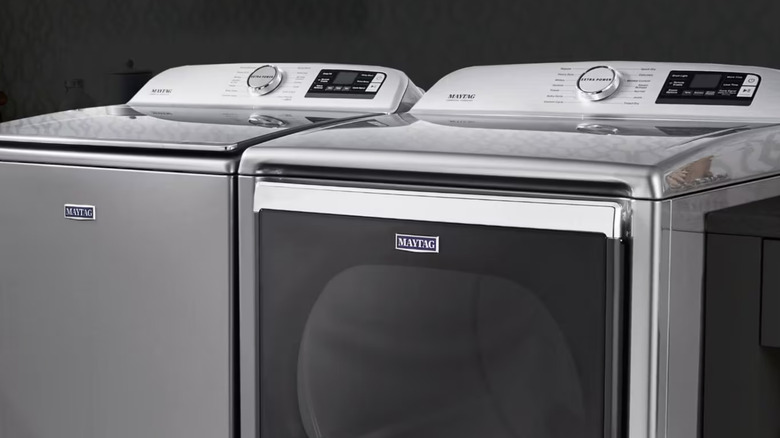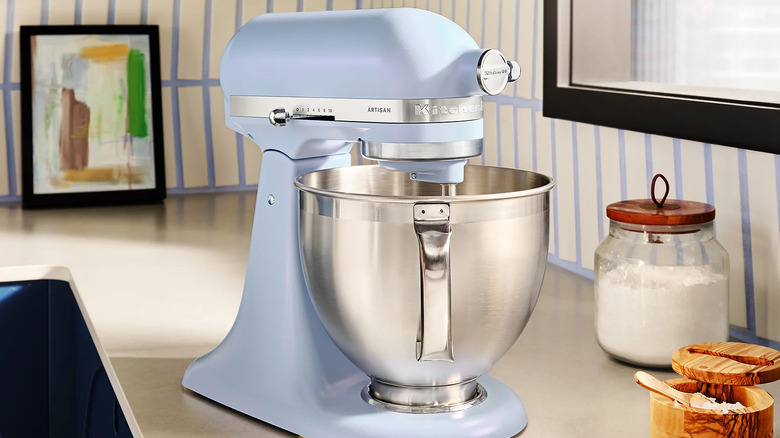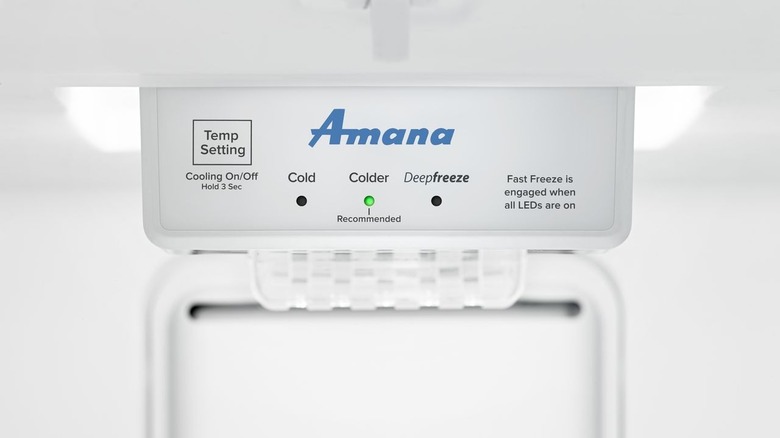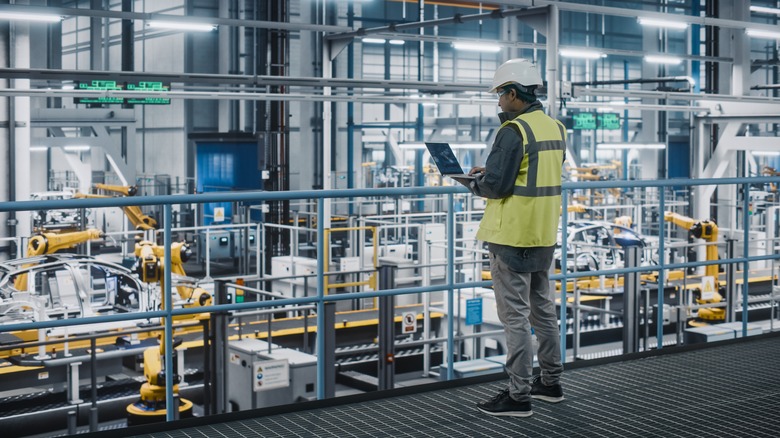5 Appliance Brands That Are Still Made In The USA
Globalization has brought about a lot of advantages, such as technological advancements through specialization, skilled workers, product variation, and lower prices of goods. It can be a boon to people looking to enrich their lives with more options. However, globalization does come at a price, especially with its overall impact on the local economy.
Unfortunately, it's hard to know what brands are made in America. In the increasingly complex world of manufacturing, the average person may not have the time to check how many of their appliance's components were truly sourced, processed, or assembled in the U.S. Thankfully, the Federal Trade Commission (FTC) proposed guidelines for what products can be labeled "Made in the U.S.A." in 2020. To be considered M.U.S.A., the FTC shares three guidelines:
-
Final assembly or processing of the product occurs in the United States;
-
All significant processing that goes into the product occurs in the United States; and
-
All or virtually all ingredients or components of the product are made and sourced in the United States.
Advertisement
Companies that don't follow these requirements cannot market products as "Made in the U.S.A." Additionally, the FTC can better manage the quality of products associated with American manufacturers with civil penalties for violations.
While it may be impossible to rule out foreign element use in your home completely, here are some American-made brands and products that should be on your list for your next appliance purchase.
General Electric
Since 1907, General Electric (GE) has been one of America's most notable appliance brands. In its 2020 Economic Impact report [PDF], GE claims $18 billion in contributions to the U.S. GDP. With its global headquarters in Kentucky, GE reports its reach is so extensive it will operate in half of all U.S. homes in 2024.
Linked to one of the best-known inventors in American history — Thomas Edison — GE acquired the assets of the Edison General Electric Company and two other electrical companies in 1892. Since then, GE has expanded its operations far outside electronics.
These days, GE has its hands in aerospace, power, and renewable energy. It also touches on manufacturing, materials science, and data analytics. Despite its evolution, GE still houses several appliance brands under its portfolio, such as Monogram, Café, GE, GE Profile, Haier, and Hotpoint. Among these, GE claims that more than 250 of its appliances are guaranteed to be "Made in America," including refrigerators, ranges, wall ovens, dishwashers, and washing machines.
Whirlpool
Whirlpool got its start in Benton Harbor, Michigan, in 1911. it claims to be the world's leading kitchen and laundry appliance company with repair contractors. The Whirlpool offerings even include other appliance brands on this list, like KitchenAid, Maytag, and Amana.
In 2015, Consumer Reports noted that several Whirlpool appliances, like the French-door bottom-freezer refrigerators, conventional bottom-freezer refrigerators, wall ovens, HE top-loader washing machines, and conventional top-loader washing machines, are all made in the United States. It has factories across the United States, however, the New York Times does note that some products are manufactured abroad.
In 2006, Whirlpool issued a supplier code of conduct, which helps safeguard against "abusive, exploitative or illegal conditions exist in their supply chains." Whirlpool has reportedly worked to avoid its reliance on conflict materials. Whirlpool's 2022 Conflict Minerals Report also outlines efforts it has been taking to do due diligence on its suppliers.
Maytag
In 1893, the Maytag Corporation began as a farming goods manufacturer. However, it began building its first washer to help tide itself over during a slow-selling season in 1907. Although washers already existed, Encyclopedia notes that Maytag's first washing machine "Pastime" changed the world of clotheswashing with a hand crank attached to its cypress tub.
After making special materials during the World War II effort, Maytag began manufacturing clothes dryers in 1953. Since then, Maytag has continued to improve its domestic appliances, with its machines being some of the rare ones to sport the coveted "Made in the U.S.A" sticker. Today, it still ranks as one of the top major washing machine brands in the market and is known for its good warranty coverage.
Aside from washing machines, Consumer Reports shares that several products in the Maytag portfolio are also considered Made in the U.S.A., including conventional bottom-freezer refrigerators, wall ovens, smooth-top electric ranges, and self-defrost upright freezers. However, it's important to note that some Maytag products may still be manufactured outside the United States.
KitchenAid
In 1908, a Hobart Corporation engineer named Herbert Johnston started the development of the stand mixer. Although it took a decade to file the U.S. patent, it didn't stop KitchenAid from becoming a household brand.
Referred to as Model H-5, KitchenAid launched a versatile kitchen solution that helped with slicing, straining, and other food preparation needs in 1919. However, it wasn't until 1937, that KitchenAid launched Model K, which had the iconic KitchenAid "shape" with a bowl secured to the base. Decades later, the classic KitchenAid stand mixer's design has stood the test of time for a reason. According to the Smithsonian, the design was even called an icon of American design by the San Francisco Museum of Modern Art in 1997.
According to Consumer Reports, KitchenAid products still made in the U.S.A. include dishwashers, ranges, stand mixers, and wall ovens. Although many of KitchenAid's signature products are still made in America, some lesser-known appliances are now produced in other countries. For example, the KitchenAid Blade Coffee Grinder and the KitchenAid 2-Slice Toaster list China as their country of origin on Amazon.
Lastly, just because KitchenAid's key product lines are assembled in the United States, it doesn't mean all of its parts are, including attachments and replacements. In 2019, All American claimed that official KitchenAid replacement parts (via its parent company Whirlpool) were sourced from China.
Amana
Named after its city of origin in Amana, Iowa, Amana is an American manufacturing brand that pioneered designs such as the side-by-side refrigerator (1949), the bottom-freezer refrigerator (1957), and the countertop microwave oven (1967). Founded by George C. Foerstner in 1934, Amana's ownership has changed hands several times from Raytheon in 1965) to Goodman Global in 1997, Maytag in 2001, and Whirlpool in 2006.
Despite this, Amana has continued to produce many of its appliances in the U.S., such as its conventional bottom freezers and manual-defrost chest freezers, according to Consumer Reports. Known as a good budget brand for washing machines, many of Amana's smaller appliances, such as its Medium-Duty Microwave Oven are also listed as made in the U.S.A.
According to U.S. News, Amana is best known for its residential and commercial refrigerators and HVAC products. In 2014, the Amana heating and air conditioning systems were included in the Goodman Global acquisition by Daikin Industries. On its website, Amana claims this buyout ensured that its systems would continue to be designed, engineered, and assembled in the U.S.
Support American products and services
For Americans, buying domestically-made products or appliances can help you contribute to the local economy's growth in several ways. Aside from helping generate jobs for other Americans, the increased tax revenue from the manufacturers can help fund local infrastructure and help fund the next generation of American-made appliances. You can also reduce your overall carbon footprint or environmental impact because the products are shipped locally.
From a practical standpoint, several American brands manufacture some of the most reliable appliances. Buying from a U.S. manufacturer can also lead to more convenient repair options, which adds to the overall longevity of your appliance. Many modern home appliances are designed to last at least 10 years and give additional peace of mind.
Compared to some international manufacturers, locally made appliances often mean easier access to spare or replacement parts. In addition, you're more likely to be able to send it back for professional repair, because they'll have authorized repair centers in the same country. Lastly, you can also buy an American-made product knowing that it has passed the necessary safety regulations, and laws protecting the rights of factory workers.
Aside from appliances, Americans can also support the economy by buying local products in other ways. Whether it's a luxury classic car or tools for your garage, you can use the dollars you were meant to spend anyway towards helping your fellow countrymen.
